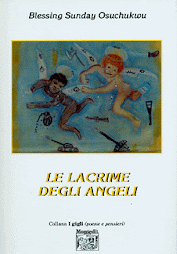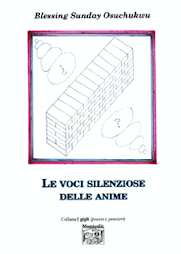Government
The 1948 Constitution of Italy established a bicameral legislature (parliament), an executive branch composed of a Council of Ministers (cabinet), headed by the President of the Council (prime minister), and an independent judicial branch headed by the 'Consiglio Superiore della Magistratura'.
Head of State

Giorgio Napolitano was elected President on 10 May 2006.
As the head of state, the President of the Republic represents the unity of the nation and has many of the duties previously given to the king of Italy. The president serves as a point of connection between the three branches of power: he is elected by the lawmakers, he appoints the executive, and is the president of the judiciary. The president is also the commander-in-chief of armed forces.
The President of the Republic is elected by an electoral college consisting of both houses of Parliament and 58 regional representatives for a seven-year term. His election needs a wide majority that is progressively reduced from two-thirds to one-half plus one of the votes as the ballots progress. The only Presidents ever to be elected on the first ballot are Francesco Cossiga and Carlo Azeglio Ciampi. Mr. Ciampi was replaced by Giorgio Napolitano, who was elected on 10 May 2006. While it is not forbidden by law, no president has ever served two terms.
Usually, the President tries to stay out of the political debate, and to be an institutional guarantee for all those involved in the political process. The president can also reject openly anti-constitutional laws by refusing to sign them, since he acts as the guardian of the Constitution of Italy.
Executive
The President of the Republic appoints the Council of Ministers and its President (the prime minister). The prime minister advises the President of the Republic on the composition of the rest of the Council of Ministers (the cabinet), which comprises the ministers in charge of the various governmental departments. In practice, the President accepts prime minister's advice, and submits the proposed Council for a vote of confidence from both parliamentary chambers.
The government has the power to issue decrees. Decrees have to be confirmed in the parliament, and "decree jam" has been a problem in recent years, as governments try to reform the structure of the state using chiefly decrees instead of passing laws directly through the parliament.
The prime minister, through the cabinet, effectively runs the government of Italy. The current Prime Minister is Silvio Berlusconi.
Legislative branch
Italy elects a parliament consisting of two houses, the Chamber of Deputies (Camera dei Deputati), which has 630 members and the Senate of the Republic (Senato della Repubblica), comprising 315 elected members and a small number of senators for life). As of 15 May 2006, there are seven life senators of whom three are former Presidents. Both houses are elected for a maximum of five years, but they may be dissolved before the expiration of their normal term.
Legislation may originate in either house and must be passed in identical form by a majority in each.
Judicial branch
The Italian judicial system is based on Roman law modified by the Napoleonic code and later statutes. It is based on a mix of the adverserial and inquisitorial civil law systems, although the adversarial system was adopted in the Appeal Courts in 1988. Appeals are treated almost as new trials, and three degrees of trial are present. The third is a legitimating trial.
There is only partial judicial review of legislation in the American sense. Judicial review exists under certain conditions in the Constitutional Court, or Corte Costituzionale, which can reject anti-constitutional laws after scrutiny.
The Constitutional Court is composed of 15 judges one of which is the President of the Italian Constitutional Court elected from the court itself. One third of the judges are appointed by the President of the Italian Republic, one-third are elected by Parliament and one-third are elected by the ordinary and administrative supreme courts. The Constitutional Court passes on the constitutionality of laws, and is a post-World War II innovation. Its powers, case load, and frequency of decisions are not as extensive as those of the U.S. Supreme Court.
Italy has not accepted compulsory jurisdiction of the International Court of Justice
Chamber of deputies: 630 members
Senate of the Republic: 350 members
All Italian citizens older than 18 can vote. However, to vote for the senate, the voter must be at least 25 or older.
There are 20 Regions in Italy:
Abruzzo (with capital L'Aquila)Basilicata (Potenza)Calabria (Catanzaro)Campania (Napoli)Emilia-Romagna (Bologna)Friuli-Venezia Giulia (Trieste)Lazio (Roma)Liguria (Genova)Lombardia (Milano)Marche (Ancona)Molise (Campobasso)Piemonte (Torino)Puglia (Bari)Sardegna (Cagliari)Sicilia (Palermo)Trentino-Alto Adige / Südtirol (Trento, Bolzano)Toscana (Firenze)Umbria (Perugia)Valle d'Aosta (Aosta)Veneto (Venezia)
Presently there are 110 Provinces and about 8101 local councils (Comune)
(Wikepedia, Blessing Sunday Osuchukwu)























2 commenti:
non ce la posso fare a commentare il nostro sistema politico (lo abiuro, totalmente o quasi), ma direi che l'hai sintetizzato in modo obiettivamente corretto, bravo :))
sono di corsa ma un abbraccio te lo lascio sempre volentieri :)))
Grazie mille a te Bibi, so che non è così facile ma era giusto per far capire qualcosa a qualcuo.
Anche io ti abbraccio!
Posta un commento